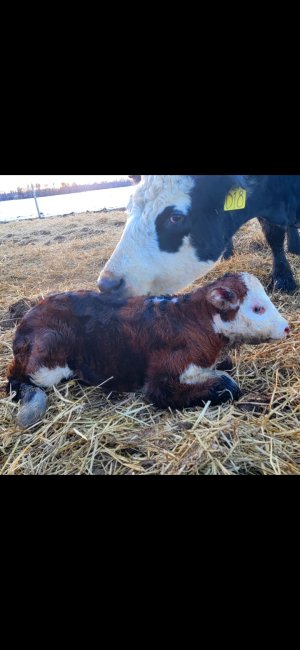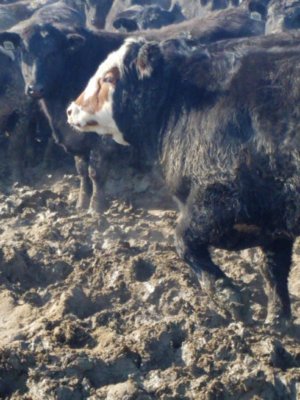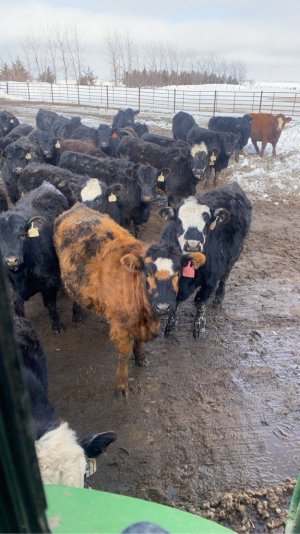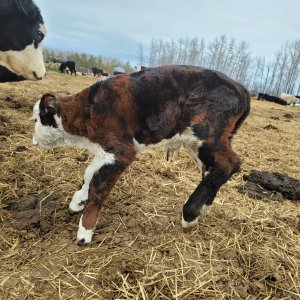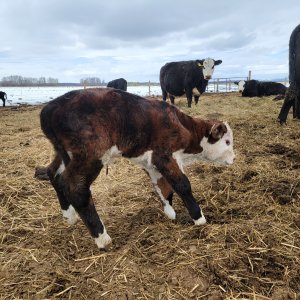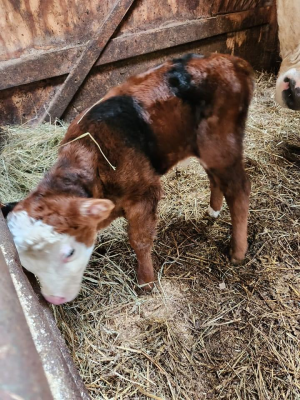I'm betting on a chimera... essentially two fertilized eggs, one carrying the dominant black coat color gene, and one carrying only recessive red, combined early in embryonic development... hence the 'patchwork' coat color. Coat color is probably the only 'visible' trait we can ascertain... testicles (and any sperm produced) could be 'all red', 'all black', or... there's even a possibility of 'one red/one black' testicle pairing.
I've seen photos of chimeras created (back in the 1980s) in the 'test tube' by taking Angus, Hereford, and Simmental embryos and fusing them at, like 8- or 16-cell stage, with the resulting calf having patchwork black/white/spotted coat color - and presumably, internal organs could have different genetic origin... might have Hereford lungs, Angus kidneys, Simmental liver, etc.
There have been purebred bulls whose blood test genetic analysis did not match up with those of their offspring, because they were chimeras, and their testicles developed from cells belonging to the twin other than the one that gave rise to blood cell lines.


